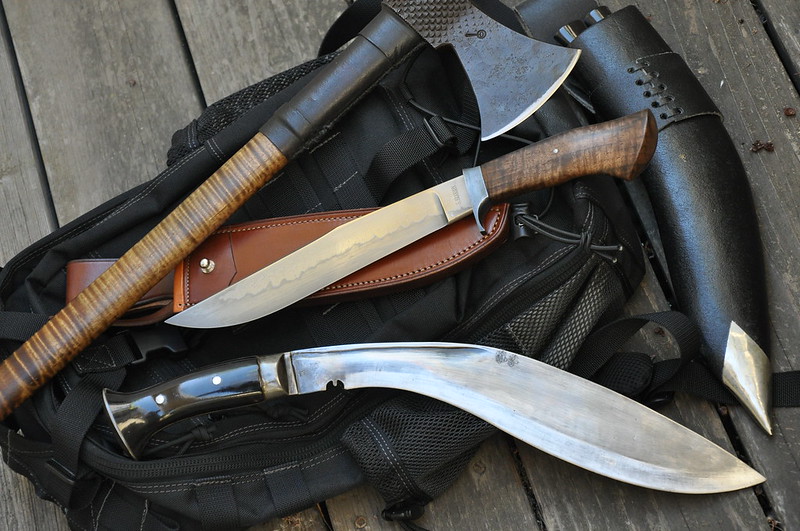We have had this discussion before and there were no firm conclusions.

It really is hard to know when the transition was made from iron to steel. Judging by my observations of the cutlery industries in America, I would guess that the bolsters and liners were made of steel only when it became affordable or cost effective to do so - possibly late 1800's ? Production costs were always a major concern for cutlery manufacturers.
By the early 1900's, American cutleries were struggling with profit margins and went to Congress to ask for import tariffs.
Many of the old catalogs list iron bolsters, iron liners, and stag handles. I think they used the terms loosely. Clearly, many of the stag handled listings were in fact jigged bone. I suspect the same of iron and steel - most likely they used the term iron loosely.
We may never know - I reckon everyone has died that had the answers.

This is part of yet another simplified iron-steel article I have read. I expect it is fairly accurate:
Wrought iron
Cast iron assumes its finished shape the moment the liquid iron alloy cools down in the mold. Wrought iron is a very different material made by mixing liquid iron with some slag. The result is an iron alloy with a much lower carbon content. Wrought iron is softer than cast iron and much less tough, so you can heat it up to shape it relatively easily, and it's also much less prone to rusting. However, relatively little wrought iron is now produced commercially, since most of the objects originally produced from it are now made from steel, which is both cheaper and generally of more consistent quality.
Wrought iron is what people used to use before they really mastered making steel in large quantities in the mid-19th century.
Types of steel
Strictly speaking, steel is just another type of iron alloy, but it has a much lower carbon content than cast and wrought iron and other metals are often added to give it extra properties. Steel is such an amazingly useful material that we tend to talk about it as though it were a metal in its own righta kind of sleeker, more modern "son of iron" that's taken over the family firm! It's important to remember two things, however. First, steel is still essentially (and overwhelmingly) made from iron. Second, there are literally thousands of different types of steel, many of them precisely designed by materials scientists to perform a particular job under very exacting conditions. When we talk about "steel", we usually mean "steels"; broadly speaking, steels fall into four groups: carbon steels, alloy steels, tool steels, and stainless steels. These names can be confusing, because all alloy steels contain carbon (as do all other steels), all carbon steels are also alloys, and both tool steels and stainless steels are alloys too.
Carbon steels
The vast majority of steel produced each day (around 8090 percent) is what we call carbon steel, though it contains only a tiny amount of carbonsometimes much less than 1 percent. In other words, carbon steel is just basic, ordinary steel. Steels with about 12 percent carbon are called (not surprisingly) high-carbon steels and, like cast-iron, they tend to be hard and brittle; steels with less than 1 percent carbon are known as low-carbon steels and like wrought iron, are softer and easier to shape. A huge range of different everyday items are made carbon steels, from car bodies and warship hulls to steel cans and engine parts.
Iron or Steel ?
Damascus and Koa Wood Bird and Trout Knife
Chris Montgomery - Maker
Damascus of 1084 and 15N20 in a twisted W's pattern.
Ferrule is wrought iron with a coined 416 spacer.
3 1/2" blade and 7 7/8 OAL.









